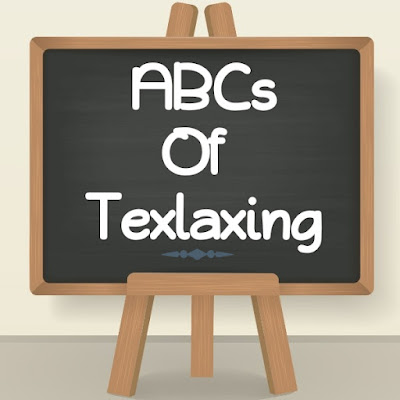Texlaxed hair is gradually becoming more popular in the hair care world. The aim of this post is to break down basic things about texlaxing, how it's different from relaxing or texturising, how to texlax and it's pros and cons.
What is Texlaxing?
Texlaxing is deliberately under-processing the hair during a relaxer application process. This leaves a bit of texture in the hair, this implies that the hair is not allowed to be bone-straight or silky straight. The amount of texture left in the hair or how under-processed the hair is, depends on individual preferences.
How to Texlax
Texlaxing is done with relaxers (both lye and no-lye). This is how it is different from texturising (done with texturisers). It's also where the name was coined from i believe; Texture + Relaxer/Relaxing.
Method 1: Reducing the relaxer application and processing time to 15 minutes or less
Method 2: Reducing the applicator before mixing it with the relaxer creme in no-lye relaxers.
Method 3: Diluting relaxer with carrier oils (olive oil, coconut oil, avocado oil, sunflower oil). Add 1 - 3 tablespoons to the relaxer depending on how weak you want it to be, and mix thoroughly.
Method 4: Saturating/coating the hair strands with a carrier oil just before the relaxer application process.
Any of these methods can be used and two or more methods can also be combined. Each method or combos can be adjusted to give preferred texture. For example, someone using a no-lye relaxer could pour 80% of the activator into the relaxer creme to get hair with just a little texture/coils. Another person that only wants to adjust the curl pattern slightly could pour 50% activator or less into the relaxer creme. The activator makes the relaxer creme in no-lye relaxers potent, hence the more you add, the straighter your results. The more oil or conditioner you add to your relaxer, the weaker it is and you would have more texture or kinks left.
My method:
I apply a light oil like olive oil all over my hair
I add 2 tablespoons of olive oil or coconut oil to my relaxer (ORS lye Relaxer).
*application and processing time usually less than 15 - 16 minutes and I smooth the relaxer just once with my fingers. No combs
There are posts on here detailing my texlaxing routine.
Pros of Texlaxing
- Slightly less chemical (relaxer) damage than in bone-straight relaxed hair
- Thicker hair or more volume
- Some natural hair styles would give better results in texlaxed hair than bone straight relaxed. For example; braidouts, twistouts. Updos & buns also have more volume
- Usually more manageable than unprocessed natural hair
Cons of Texlaxing
- Getting same texture results at every touch up might be difficult. This can be managed by being consistent with method(s) used and application and processing times
- Higher probability of breakage because of texture similar to kinky hair, dryness, breakage at the line of demarcation between new growth and texlaxed hair, and varying texture results from touch-ups. This can be managed by regular sealing & moisturising and deep conditioning.
- More difficult to manage than bone straight relaxed hair. The texture and thickness makes texlaxed hair very prone to knots and tangles like in natural hair. To manage this, work in small sections, detangle your hair thoroughly before washing, keep your hair stretched post wash and generally handle your hair like it's natural.
- Texlaxed hair is also chemically processed and should be treated accordingly. Regular light or medium protein treatments (ORS replenishing conditioner, Organics hair Mayonnaise, ORS Hair Mayonnaise, Aphogee Two Minutes Keratin Protein Reconstructor, Vitale Olive Oil Hair Mayonnaise etc. ) once in 4 - 6 weeks and strong protein treatments (Aphogee 2 Step Protein Treatment) 1 or 2 weeks before texlax touch-up.
My Verdict: Texlaxed hair is NOT for a lazy hairlista, else there would be frustration due to dryness, breakage and so much thickness and volume. However, if you are ready to put in the work, you can have the best of both worlds of natural and relaxed hair. *winks. Search out texlaxed hair bloggers or vloggers, learn about their struggles, success and be INSPIRED or otherwise. Lol
If you have any questions, drop a comment below or send a mail to hairvolutionbybee@yahoo.com.
xx,
Bee.
Disclaimer: Everything stated in this post is based on my personal experiences and should not be take as scientific or professional advice. Please do your personal research before making any drastic haircare changes.


This comment has been removed by the author.
ReplyDeleteHello Bee,
ReplyDeleteThank you for sharing.
I have tried texlaxing and experienced setbacks because the hair became really tough to handle especially when you have a scalp that is as tender as mine and aches at the slightest manipulation.
Like I told you, I had to switch to bone straight which I have been taking time to ensure I do not experience any setbacks but it will be nice if you could share a few tips on managing the hair using protective styles for different hair lengths and products to use to help better manage the hair texture so it is not tiresome.
Looking forward to your updates.
Regards, Temi.